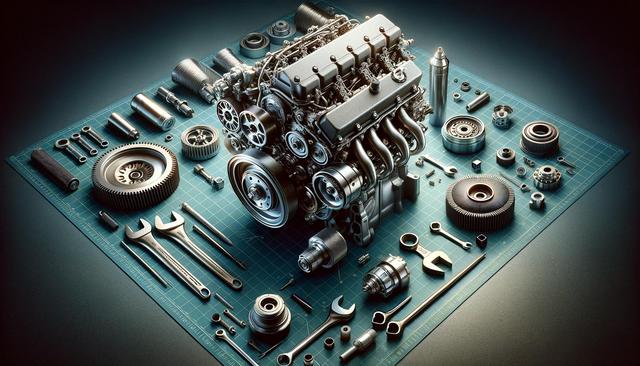Understanding the Value of Low Mileage Used Engines
When it comes to replacing a damaged or worn-out engine, many vehicle owners turn to low mileage used engines as a practical alternative to buying new. These engines, often removed from vehicles that have been totaled due to exterior damage or other issues unrelated to the powertrain, typically have fewer miles on them and less wear and tear. This means they can offer significant savings while still delivering dependable performance. For those looking to reduce repair costs without sacrificing quality, a low mileage used engine can be an appealing option.
Low mileage engines are defined by their limited usage, usually having fewer than 60,000 miles. This reduced usage often translates to better internal condition, less oil consumption, and fewer mechanical issues. Because engine wear correlates strongly with mileage, choosing a unit with lower mileage can mean more years of reliable service ahead. Additionally, many suppliers conduct rigorous testing and inspections to ensure functionality before resale, further supporting their appeal.
Where Do Low Mileage Engines Come From?
The sources of low mileage used engines vary, but they typically come from:
- Insurance write-offs due to accidents where the engine remained intact
- Fleet vehicles that were retired early
- Dealership trade-ins with minimal use
- Vehicles with body damage beyond economical repair
These sources often result in engines that are still in excellent mechanical condition. Salvage yards and auto recyclers play a crucial role in extracting and testing these engines before putting them on the market. Some suppliers even specialize in sourcing engines from specific regions or countries known for lower average vehicle usage, ensuring customers receive high-quality units.
Because the sources are varied, it’s essential to obtain documentation where possible. A reputable seller should be able to provide odometer readings, vehicle history reports, and test results to verify the mileage and condition of the engine. Transparency in these areas helps build trust and ensures buyers are making an informed decision.
Benefits of Choosing a Low Mileage Used Engine
There are several key benefits to selecting a low mileage used engine, especially when compared to remanufactured or brand-new options:
- Cost efficiency: Lower purchase price than new or rebuilt engines
- Environmentally conscious: Reusing existing components reduces waste
- Immediate availability: No need to wait for manufacturing or shipping delays
- OEM quality: Many used engines retain original manufacturer parts and specifications
These advantages make low mileage engines an attractive choice for budget-conscious drivers, restoration projects, or anyone looking to keep their current vehicle running longer. It’s also worth noting that installation costs are typically lower than those associated with full engine rebuilds, making the total cost of engine replacement more manageable.
Furthermore, many suppliers offer limited warranties or return policies on used engines. While these may not be as comprehensive as those for new engines, they provide a degree of assurance that can make the investment feel more secure.
What to Look for When Buying a Low Mileage Engine
Not all used engines are created equal, even those with low mileage. To ensure you’re making a sound purchase, consider the following factors:
- Verify mileage and obtain supporting documentation
- Inspect for visual signs of wear or damage
- Ask about compression test results and oil pressure readings
- Inquire about the engine’s compatibility with your vehicle model
- Check if any accessories (alternator, starter, etc.) are included
It’s also helpful to work with a mechanic or technician familiar with engine swaps to ensure the unit will work seamlessly with your vehicle’s existing systems. Compatibility can vary even within the same vehicle make and model, depending on production year and trim level.
Before finalizing your purchase, review the seller’s return policy, warranty terms, and shipping details. A reputable provider will stand behind their product and offer support in case any problems arise post-installation.
Installation and Maintenance Tips
Once you’ve sourced the right engine, proper installation is critical to long-term performance. It’s advisable to have the engine installed by a certified technician who has experience with your vehicle type. During installation, it’s common practice to replace related components such as:
- Timing belts or chains
- Water pumps
- Gaskets and seals
- Spark plugs and wires
These preventive measures can help avoid future issues and ensure the new engine runs smoothly. Additionally, it’s important to flush the cooling and lubrication systems before installation to remove any debris or contaminants that could damage the new engine.
After installation, follow a strict maintenance schedule. Regular oil changes, using the recommended grade of oil, and periodic inspections will help preserve the engine’s longevity. Keeping records of all maintenance and the original purchase details can also be beneficial if warranty claims are ever needed.
Conclusion: Making a Smart Choice with Low Mileage Engines
Low mileage used engines offer a practical and economical solution for vehicle owners facing major repairs. By choosing a unit with verified mileage and ensuring proper installation and maintenance, drivers can enjoy many additional years of reliable service without the high cost of a brand-new engine. Whether you’re restoring a car, managing a tight budget, or simply extending the life of your current vehicle, considering a low mileage engine could be a wise and rewarding decision.







